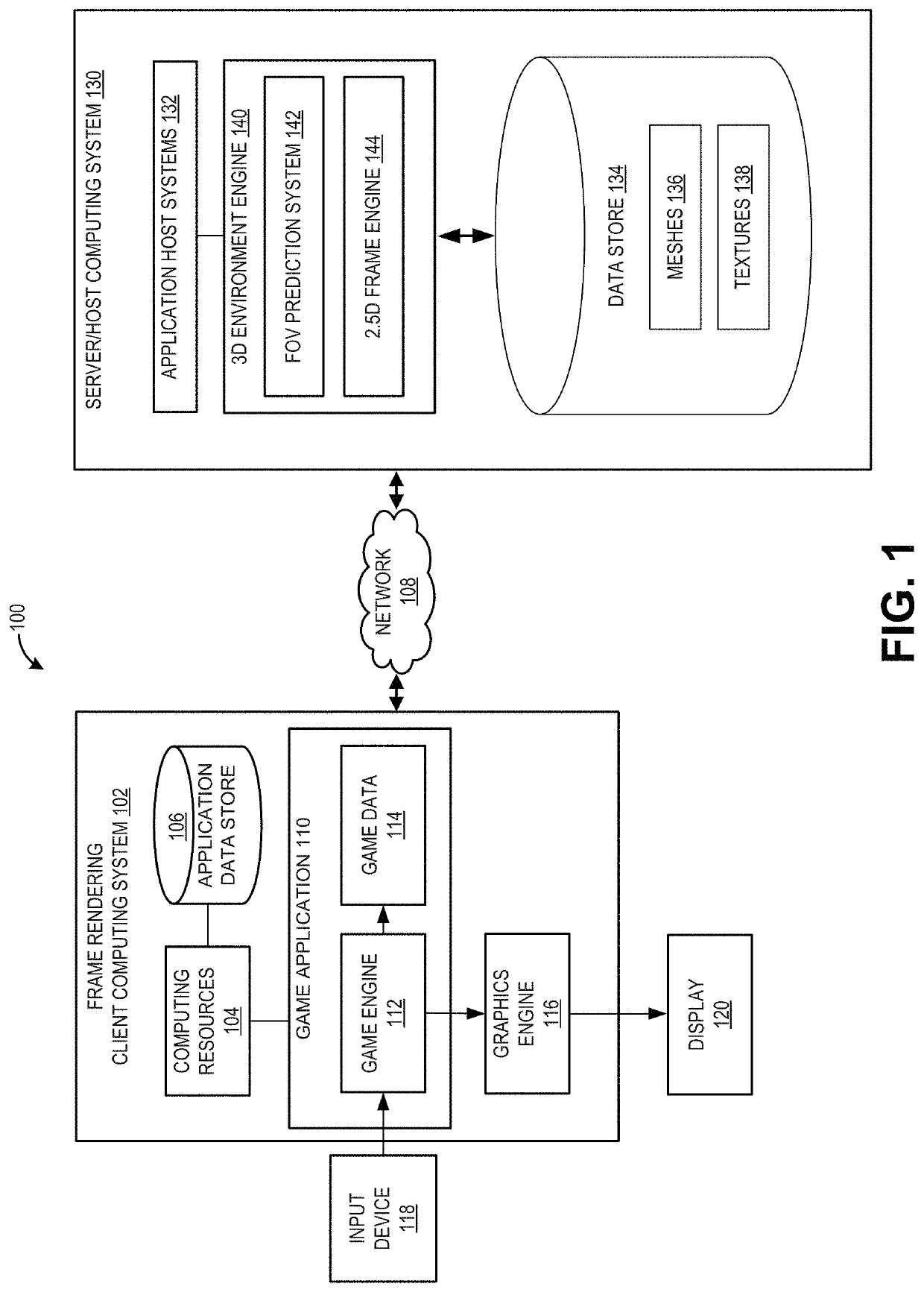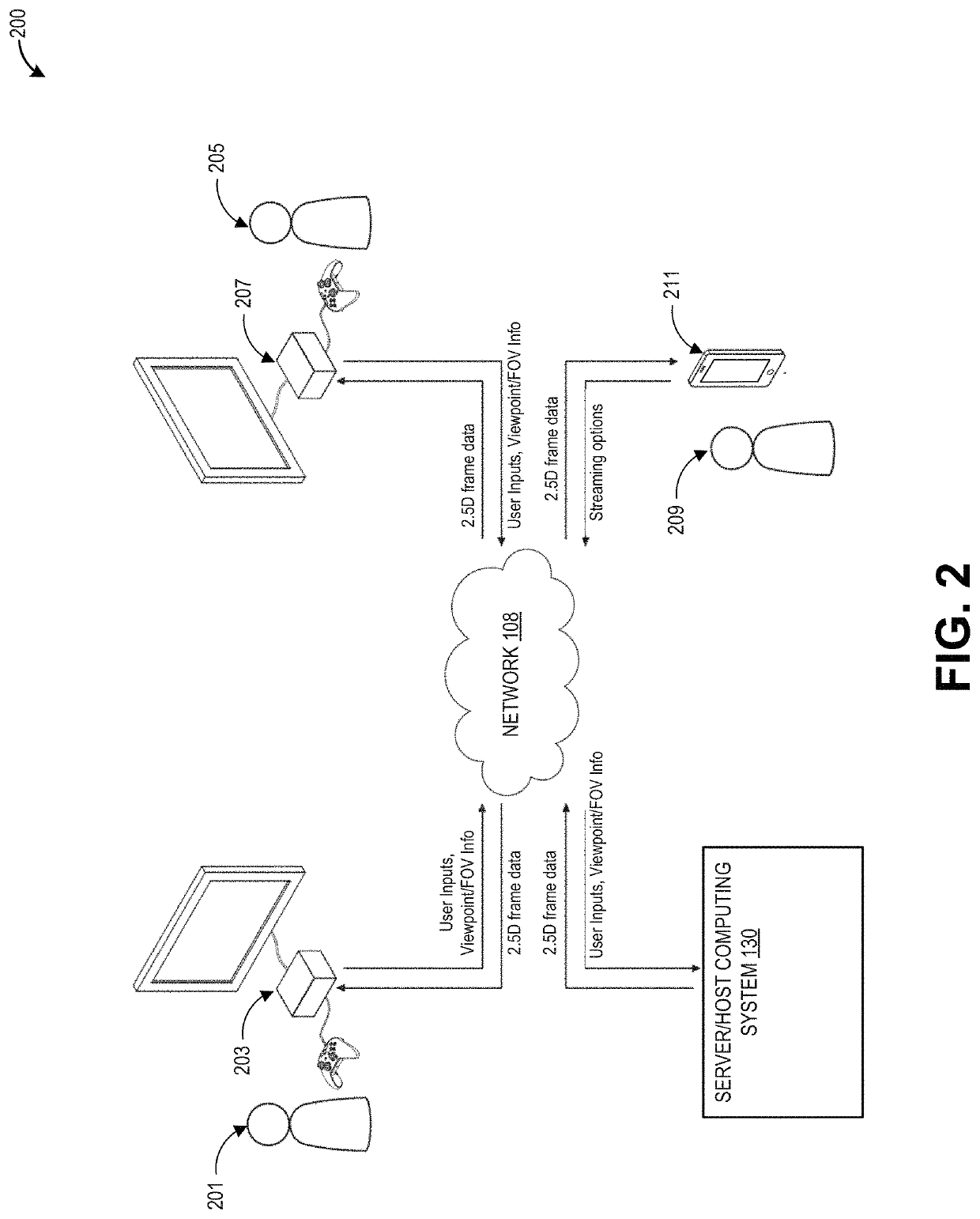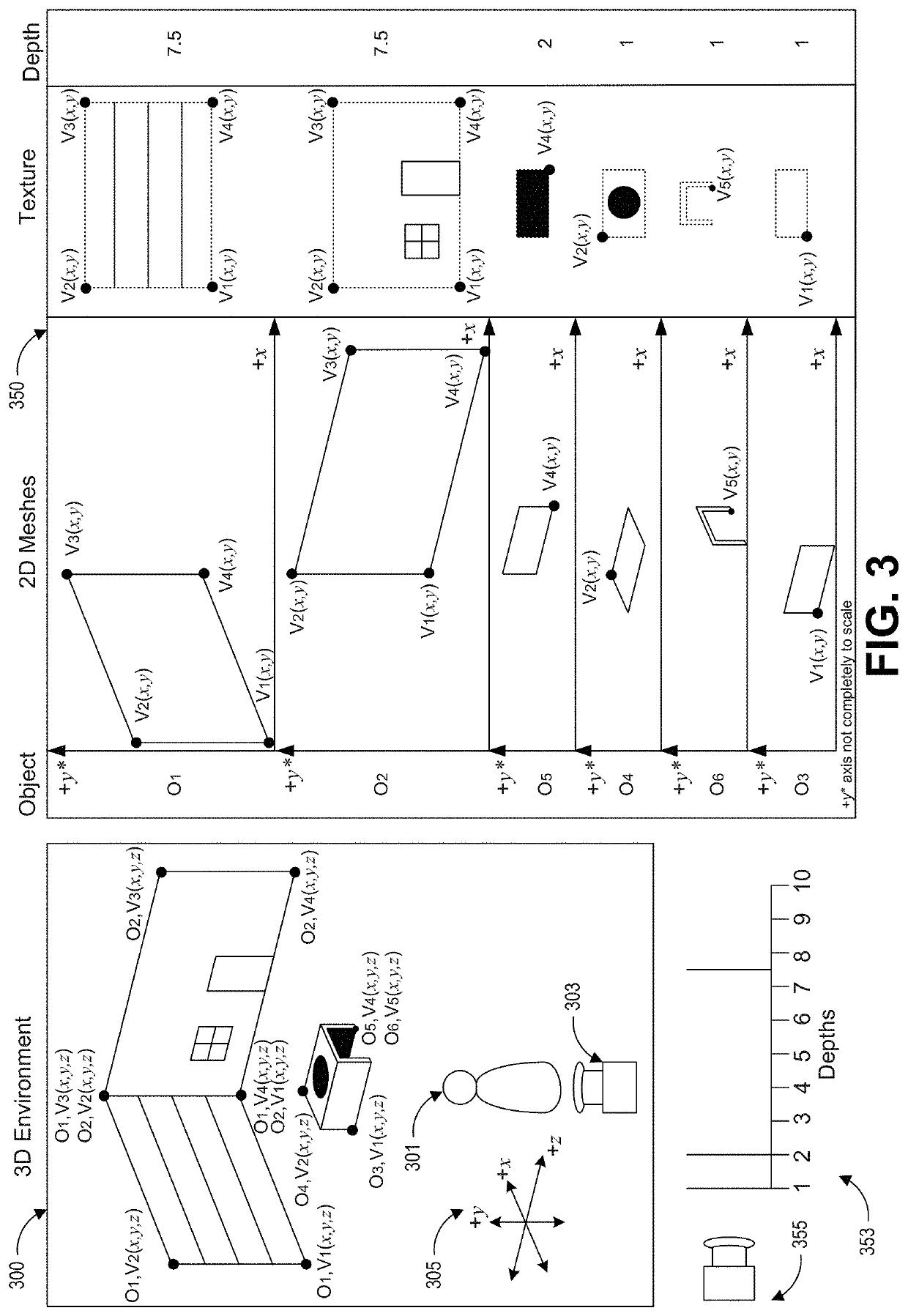2.5D graphics rendering system
a graphics rendering and 2.5d technology, applied in video games, indoor games, sport apparatuses, etc., can solve the problems of high bandwidth and transfer rate, 3d graphics data can take time to prepare, etc., and achieve the effect of higher level of detail
- Summary
- Abstract
- Description
- Claims
- Application Information
AI Technical Summary
Benefits of technology
Problems solved by technology
Method used
Image
Examples
example 3d
Environment and Corresponding 2.5D Information
[0072]FIG. 3 shows an example 3D environment 300 and visualization of corresponding 2.5D information. The 3D environment 300 can be simulated by the 3D environment engine 140 as shown in FIG. 1. The 2.5D representation of an image seen from a viewpoint within the 3D environment 300 can be generated by the 2.5D frame engine 144 discussed with respect to FIG. 1.
[0073]The 3D Environment
[0074]The 3D environment 300 shows an inside of a room with a table as seen by a character 301 in the 3D environment 300. The 3D environment 300 includes x, y, and z dimensions as shown by the coordinate system 305. In various embodiments, the coordinate system 305 can be fixed with respect to a stationary point or can be moved relative to a position of a character 301.
[0075]A camera 303 represents a viewpoint in the 3D environment 300 from which a 2.5D representation can be generated. In the illustrated example, the camera 303 represents the viewpoint of the...
example execution
[0120]FIG. 7A shows an example of a rasterized frame 700 of a room, and FIG. 7B shows two 2D textures for rasterizing the frame 700. The frame 700 includes two walls, a box, and a floor. The first 2D texture 705 includes a 2D texture for the walls and floor. The second 2D texture 710 includes a 2D texture for a box.
[0121]A plurality of white vector lines indicates how vertexes of meshes of objects in the 2.5D scene change from one frame to the next as a viewpoint within a corresponding 3D environment moves to the left while rotating to the right. The white vector lines can also indicate how objects move within the environment. In various embodiments, the vectors can be vertexes of mesh boundaries and / or vertexes of mesh interiors.
[0122]The frame 700 is rendered by a client computing system according to the techniques disclosed herein. A one-time data preload (such as described in block 502 of FIG. 5) of about 8.8 MB is transmitted from a server computing system to a client computing...
PUM
 Login to View More
Login to View More Abstract
Description
Claims
Application Information
 Login to View More
Login to View More - R&D
- Intellectual Property
- Life Sciences
- Materials
- Tech Scout
- Unparalleled Data Quality
- Higher Quality Content
- 60% Fewer Hallucinations
Browse by: Latest US Patents, China's latest patents, Technical Efficacy Thesaurus, Application Domain, Technology Topic, Popular Technical Reports.
© 2025 PatSnap. All rights reserved.Legal|Privacy policy|Modern Slavery Act Transparency Statement|Sitemap|About US| Contact US: help@patsnap.com



